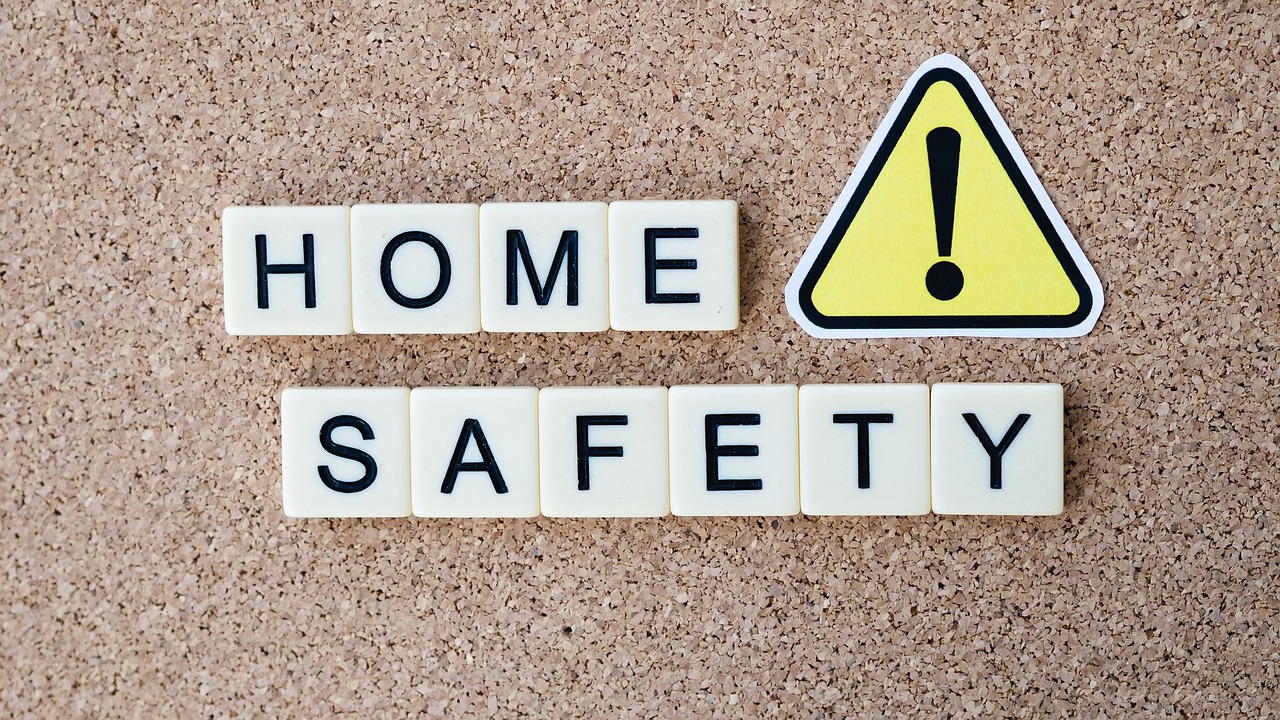The Invisible Hand of Human Behavior in Safety Regulations
Have you ever thought about how our actions and decisions shape the rules that keep us safe? It’s like an intricate dance, where human behavior plays the lead role in the creation and enforcement of safety regulations. The interaction between psychological factors, societal norms, and individual decision-making is what truly drives the evolution of safety practices and policies. This article delves deep into this fascinating interplay, shedding light on how our perceptions of risk, the influence of our peers, and even the technology we use can dramatically affect safety compliance.
Understanding the psychology of risk perception is the first step in this journey. Each of us has a unique lens through which we view the world, influenced by cognitive biases and emotional responses. For instance, do you remember the last time you hesitated to follow a safety protocol? Perhaps it was due to an overconfidence bias, where you felt invulnerable to potential dangers. Or maybe it was the optimism bias, convincing you that accidents only happen to others. These psychological factors can lead to decisions that undermine safety regulations, highlighting the need for a deeper understanding of human behavior in shaping these policies.
Moreover, we can't ignore the power of social norms. Think about it: how often do we conform to the behaviors of those around us? If your colleagues are lax about safety practices, you might feel pressured to follow suit, even if you know it’s not the best choice. This section will explore how peer influence and cultural expectations drive adherence to safety practices across different environments, from construction sites to corporate offices. Understanding these dynamics can help organizations foster a culture of safety that encourages compliance rather than mere obligation.
At the heart of risk perception lies the intricate web of human psychology. Our brains are wired to respond to threats, but how we interpret those threats can vary widely. Cognitive biases, such as the availability heuristic, can lead us to overestimate the likelihood of dramatic events because they are more memorable. For example, the fear of flying might overshadow the statistical reality that it is one of the safest modes of transport. This misalignment between perception and reality can significantly impact our adherence to safety regulations.
Social norms are the unwritten rules that govern our behavior in society. They can be powerful motivators for compliance or, conversely, for non-compliance. In a workplace where safety is prioritized and celebrated, individuals are more likely to engage in safe practices. However, in environments where safety is not taken seriously, the opposite can occur. This section will highlight how organizations can leverage social norms to create an atmosphere that promotes safety as a collective responsibility.
Leadership plays a pivotal role in shaping a safety culture within organizations. Effective leaders not only set the tone but also model safe behaviors that employees are likely to emulate. When leaders prioritize safety and openly communicate its importance, they create an environment where safety becomes a shared value. This section will discuss strategies for leaders to influence organizational behavior positively and promote a culture where safety is non-negotiable.
Incentives can be a powerful tool in encouraging safe practices. Whether it's recognition programs, bonuses, or other rewards, the right incentives can motivate individuals to prioritize safety in their daily actions. This part will examine various incentive structures that organizations can implement to enhance safety compliance and foster a proactive safety culture.
While incentives can encourage safe behavior, punitive measures can also play a role in compliance. However, understanding their effectiveness is crucial. Over-reliance on punishment can foster a culture of fear rather than safety. This section will evaluate how punitive measures impact behavior and whether they truly enhance safety or simply create a façade of compliance.
Effective communication is the linchpin of safety awareness. Without clear, consistent messaging about safety practices, individuals may remain uninformed or misinformed. This subsection will explore strategies for conveying safety information effectively, ensuring that everyone is engaged and informed about the importance of safety in their daily routines.
As we dive into the realm of technology, it’s clear that advancements have transformed safety regulations and behaviors. From automated safety systems to data analytics, technology plays a crucial role in enhancing compliance and risk management. However, it also raises questions about the balance between technology and human oversight.
Automation can streamline safety processes, making them more efficient. However, it also introduces concerns about human oversight. This part will explore the delicate balance between relying on technology and ensuring that human intervention remains a critical component of safety management.
Utilizing data analytics can significantly improve safety regulations. By harnessing data-driven approaches, organizations can inform policy-making and enhance safety outcomes. This subsection will discuss how data can be leveraged to identify trends, predict risks, and ultimately create more effective safety practices.
- How does human behavior affect safety regulations?
Human behavior influences how safety regulations are perceived and followed, often dictated by psychological factors, social norms, and individual decision-making. - What role do leaders play in safety culture?
Leaders set the tone for safety in an organization by modeling behaviors, communicating the importance of safety, and creating a supportive environment. - Are punitive measures effective for ensuring safety compliance?
Punitive measures can deter unsafe behavior, but they may also create a culture of fear, which can be counterproductive to promoting genuine safety practices. - How can technology improve safety practices?
Technology enhances safety through automation and data analytics, allowing for more efficient processes and informed decision-making regarding safety policies.

The Psychology of Risk Perception
Understanding how individuals perceive risks is crucial in shaping safety regulations. It’s fascinating to think about how our brains process danger—like a built-in alarm system that goes off when we sense something is amiss. However, this system isn’t foolproof. Cognitive biases often cloud our judgment, leading us to underestimate or overestimate risks based on our personal experiences or emotions. For instance, if someone has never had a car accident, they might perceive driving as a low-risk activity, despite statistics showing otherwise. This disconnect between perception and reality can have serious implications for safety practices.
One of the most common cognitive biases is the optimism bias, where individuals believe they are less likely to experience negative events compared to others. Imagine walking through a construction site; you might think, “That accident won’t happen to me.” This mindset can lead to complacency, where safety regulations are ignored or downplayed. Moreover, emotions also play a significant role in risk perception. Fear can either paralyze us or prompt us to take necessary precautions. For example, after hearing about a workplace accident, employees might suddenly become more vigilant about following safety protocols, driven by a heightened sense of fear.
Another interesting aspect is the availability heuristic, where people assess the likelihood of an event based on how easily they can recall similar instances. If a person frequently sees news reports about airplane crashes, they may perceive flying as more dangerous than it actually is, despite air travel being statistically one of the safest modes of transportation. This is where safety regulations come into play. By providing clear data and evidence about risks, organizations can help shape a more accurate perception of safety.
To illustrate these concepts, let’s take a look at the following table that summarizes common cognitive biases affecting risk perception:
| Cognitive Bias | Description | Impact on Safety |
|---|---|---|
| Optimism Bias | Belief that one is less likely to experience negative events | Leads to complacency in following safety protocols |
| Availability Heuristic | Assessing the likelihood of events based on recent memories | May cause overestimation of certain risks |
| Confirmation Bias | Seeking information that confirms existing beliefs | Can hinder the acceptance of new safety practices |
Furthermore, societal norms and cultural contexts can also shape how risks are perceived. In some cultures, there may be a strong emphasis on collective responsibility, leading to a higher compliance with safety regulations. In contrast, in more individualistic societies, personal freedom may take precedence, resulting in a more relaxed attitude towards safety. This interplay between psychology and social factors underscores the complexity of risk perception.
Ultimately, understanding the psychology behind risk perception is essential for crafting effective safety regulations. By recognizing the biases and emotional triggers that influence our decisions, organizations can tailor their safety messages and practices to resonate more deeply with individuals. It’s all about bridging the gap between perception and reality, ensuring that safety isn’t just a checkbox but a core value that everyone embraces.

When we think about safety compliance, it’s easy to get lost in the technicalities of regulations and policies. However, the truth is that social norms play a pivotal role in how individuals and organizations approach safety. Imagine walking into a workplace where everyone is wearing safety gear. You’d likely feel compelled to do the same, right? This is the power of social norms at work. They shape our behaviors, often without us even realizing it. Whether it’s a construction site, a manufacturing plant, or an office, the expectations set by peers can either encourage or discourage adherence to safety practices.
Why do people comply with safety regulations in some environments but not in others? It often boils down to the influence of those around us. In many cases, individuals look to their peers for cues on how to behave. If the majority are following safety protocols, it creates a bandwagon effect, where others feel the need to conform. On the flip side, if safety practices are ignored by a few key individuals, it can lead to a culture of complacency. This phenomenon can be particularly dangerous because it not only affects individual behavior but can also ripple through an entire organization.
Consider the following factors that illustrate how social norms influence safety compliance:
- Peer Pressure: The desire to fit in can lead individuals to adopt safe practices, especially if they see their colleagues taking safety seriously.
- Leadership Influence: Leaders who prioritize safety set a tone that others are likely to follow. Their actions can create a culture where safety is viewed as a collective responsibility.
- Cultural Expectations: In some cultures, safety is a non-negotiable value, while in others, it may be seen as less critical. This cultural backdrop significantly impacts compliance levels.
Furthermore, the role of communication cannot be overstated. Open discussions about safety norms can help reinforce their importance. When organizations regularly engage employees in conversations about safety, it not only raises awareness but also fosters a shared sense of responsibility. This collective approach can create an environment where safety compliance is the norm, rather than the exception.
Interestingly, the impact of social norms on safety compliance is not limited to the workplace. It extends into our everyday lives. For instance, think about how people behave when driving on the road. If everyone is adhering to traffic laws, it creates a safer environment for all. Conversely, if some drivers choose to speed or ignore signals, it can lead to dangerous situations. This analogy highlights that safety is not just about rules; it’s also about the collective behavior that surrounds those rules.
In summary, social norms are a powerful force in shaping safety compliance. By understanding how these norms operate, organizations can leverage them to foster a culture of safety. It’s not just about enforcing rules; it’s about creating an environment where safety is valued and prioritized by everyone. As we continue to explore the invisible hand of human behavior in safety regulations, it’s clear that the influence of social norms cannot be overlooked.
- What are social norms? Social norms are the unwritten rules and expectations that govern behavior within a group or society.
- How do social norms affect safety compliance? Social norms influence individuals' behaviors by creating expectations for compliance; when safety is prioritized by peers, others are more likely to follow suit.
- Can leadership change social norms regarding safety? Absolutely! Effective leadership can establish and reinforce positive safety norms, encouraging a culture of compliance.
- What role does communication play in safety compliance? Open and ongoing communication about safety practices can strengthen social norms, making compliance a shared responsibility.

Effective leadership is the backbone of any strong safety culture within an organization. When leaders prioritize safety, they set a precedent that resonates throughout the entire workforce. Think about it: if a captain of a ship neglects safety protocols, the crew is likely to follow suit, putting everyone at risk. Conversely, when leaders actively promote a culture of safety, it not only enhances compliance but also fosters an environment where employees feel empowered to voice concerns and suggest improvements.
One of the key aspects of leadership in safety culture is the demonstration of commitment. Leaders must not only talk the talk but also walk the walk. This means consistently adhering to safety protocols themselves, participating in safety training, and visibly supporting safety initiatives. When employees see their leaders genuinely engaged in safety practices, they are more likely to emulate those behaviors. It’s like a ripple effect; one small action can lead to widespread change.
Moreover, effective leaders understand the importance of open communication. They create channels for dialogue where employees can discuss safety issues without fear of retribution. This openness encourages a culture of trust and transparency. For instance, regular safety meetings can provide a platform for discussing potential hazards, sharing near-miss incidents, and brainstorming solutions. When employees feel heard, they are more likely to take safety seriously and contribute to a proactive safety culture.
Another critical element is the establishment of clear expectations and accountability. Leaders should define what safe behavior looks like and ensure that everyone understands their roles and responsibilities regarding safety. This includes setting measurable goals for safety performance, which can be tracked and reviewed regularly. When employees know they are accountable for their actions, they are more likely to prioritize safety in their daily routines.
Incentives also play a significant role in reinforcing a safety culture. Leaders can implement reward systems that recognize individuals or teams who demonstrate exemplary safety practices. This not only motivates employees to adhere to safety regulations but also builds a sense of community and shared responsibility. For example, a monthly safety award can encourage healthy competition and foster a spirit of collaboration among team members.
Lastly, leaders must be willing to adapt and evolve their strategies based on feedback and changing circumstances. Safety is not a static concept; it requires continuous improvement and innovation. By staying informed about best practices and emerging technologies, leaders can implement changes that enhance safety protocols and keep their organizations ahead of the curve.
In summary, the role of leadership in cultivating a safety culture cannot be overstated. By demonstrating commitment, fostering open communication, setting clear expectations, providing incentives, and embracing adaptability, leaders can create an environment where safety is not just a priority but a core value. This proactive approach not only protects employees but also enhances overall organizational performance.
- What is the primary role of leadership in safety culture?
Leadership is responsible for setting the tone and expectations for safety within an organization. They must demonstrate commitment, foster communication, and establish accountability to create a strong safety culture. - How can leaders encourage employee participation in safety initiatives?
By creating an open environment for discussion and providing incentives for safe behaviors, leaders can motivate employees to actively participate in safety initiatives. - Why is communication important in safety culture?
Effective communication allows for the sharing of safety concerns, potential hazards, and best practices, fostering a culture of trust and collaboration. - What are some effective ways to recognize safe behavior?
Implementing reward systems, such as monthly safety awards or recognition programs, can motivate employees to prioritize safety and encourage a culture of accountability.

When it comes to promoting safe behavior in any setting, whether it’s a construction site, a manufacturing plant, or even an office, the role of incentives cannot be overstated. Incentives act as a powerful motivator, encouraging individuals to prioritize safety in their daily activities. Imagine a world where every employee feels valued for their commitment to safety; this not only enhances the workplace environment but also significantly reduces the risk of accidents. So, what kinds of incentives are most effective?
First, let's consider monetary rewards. These can be as simple as bonuses for achieving safety milestones or as complex as profit-sharing models that factor in safety performance. For example, a company might offer a cash bonus to teams that go a full month without any safety incidents. This not only rewards individuals but also fosters a sense of teamwork as everyone works towards a common goal. However, it’s crucial to ensure that these monetary incentives do not inadvertently encourage underreporting of incidents, as this could create a culture of fear rather than safety.
In addition to financial incentives, recognition programs can play a significant role in motivating safe behavior. Public acknowledgment of employees who demonstrate exceptional safety practices can inspire others to follow suit. For instance, a monthly "Safety Star" award can highlight individuals who go above and beyond in promoting safety, creating a ripple effect throughout the organization. This form of recognition taps into our inherent desire for approval and can be a more sustainable motivator than monetary rewards alone.
Moreover, providing professional development opportunities as an incentive can also enhance safety behavior. When employees see that their commitment to safety leads to career advancement or additional training, they are more likely to engage with safety protocols seriously. For example, offering workshops or certifications in safety management not only equips employees with valuable skills but also reinforces the organization's dedication to safety.
Additionally, it’s essential to consider the role of peer-to-peer incentives. When employees are encouraged to recognize and reward each other for safe practices, it builds a culture of accountability. This could be implemented through a simple system where employees nominate their peers for safety awards, fostering a community that values safety as a collective responsibility.
To summarize, the most effective incentive programs for promoting safety behavior should encompass a variety of approaches. A well-rounded strategy might include:
- Monetary rewards for safety milestones
- Recognition programs to highlight exemplary safety practices
- Professional development opportunities related to safety
- Peer-to-peer recognition systems
By combining these elements, organizations can create a robust framework that not only motivates employees but also cultivates a lasting safety culture. In the end, the goal is not just compliance with safety regulations but fostering an environment where safety is a shared value, and everyone feels empowered to contribute.
Q1: What are some examples of effective safety incentives?
A1: Effective safety incentives can include monetary bonuses for incident-free months, recognition awards for employees who excel in safety practices, and providing additional training or professional development opportunities.
Q2: How can peer recognition improve safety behavior?
A2: Peer recognition fosters a sense of community and accountability, encouraging employees to uphold safety standards when they see their colleagues being acknowledged for their efforts.
Q3: Are monetary incentives the best way to promote safety?
A3: While monetary incentives can be effective, they should be part of a broader strategy that includes recognition, professional development, and peer-to-peer incentives to create a sustainable safety culture.

Punishments have long been a cornerstone in the realm of safety compliance, acting as a deterrent against unsafe practices. However, the effectiveness of these punitive measures can often be a double-edged sword. On one hand, the fear of consequences may compel individuals to adhere to safety regulations, but on the other hand, it can foster a culture of resentment and fear, leading to a lack of genuine commitment to safety practices. So, how do we strike the right balance?
To understand the effectiveness of punishments, we must first explore the psychological underpinnings of human behavior. When individuals face punitive actions for unsafe behavior, their immediate reaction may be one of compliance, but this doesn't always translate into long-term behavioral change. Research indicates that punitive measures can sometimes lead to short-term compliance without fostering a true understanding of safety principles. This is akin to a child obeying a parent out of fear rather than respect; while they may follow the rules, the underlying lesson may not be learned.
Moreover, the context in which punishments are applied plays a crucial role in their effectiveness. For example, consider a workplace where safety violations result in strict penalties. If employees perceive these punishments as unfair or overly harsh, they may become disengaged and less likely to report unsafe conditions out of fear of reprisal. This creates a culture of silence, which is detrimental to safety. In contrast, when punishments are perceived as fair and are accompanied by a supportive safety culture, they can encourage individuals to take safety seriously.
To illustrate this, let's look at a comparison of punitive measures versus supportive safety practices:
| Approach | Effectiveness | Long-Term Impact |
|---|---|---|
| Punitive Measures | Can create immediate compliance | May lead to resentment and disengagement |
| Supportive Practices | Encourages open communication | Fosters a culture of safety and accountability |
In addition to the context, the nature of the punishment itself matters. Research has shown that constructive feedback paired with appropriate consequences can lead to better outcomes than punitive measures alone. For instance, instead of solely punishing an individual for a safety violation, providing training or resources to help them understand the consequences of their actions can be far more effective. This approach transforms the punishment from a negative experience into a learning opportunity, ultimately enhancing safety awareness.
Furthermore, it is essential to consider the role of consistency in applying punishments. If employees see that rules are enforced inconsistently, it can lead to confusion and frustration, undermining the credibility of safety regulations. A consistent approach not only reinforces the importance of safety but also builds trust within the organization. When employees feel that they are treated fairly and that the rules apply equally to everyone, they are more likely to engage in safe practices.
In conclusion, while punishments can play a significant role in ensuring compliance with safety regulations, their effectiveness largely depends on how they are implemented. A balanced approach that incorporates education, fairness, and open communication can create a more profound and lasting impact on safety behavior. As we navigate the complexities of human behavior in the context of safety regulations, it becomes clear that fostering a culture of safety goes beyond mere compliance; it requires a commitment to understanding the motivations and fears of individuals.
- What is the best way to implement punishments for safety violations?
It's crucial to ensure that punishments are fair, consistent, and accompanied by educational opportunities to promote understanding and accountability. - Can positive reinforcement be more effective than punishments?
Yes, positive reinforcement can create a more engaged workforce, fostering a culture of safety where individuals feel motivated to comply with regulations. - How can organizations measure the effectiveness of their safety compliance strategies?
Regular assessments, employee feedback, and tracking safety incident rates can provide valuable insights into the effectiveness of safety strategies.

When it comes to safety, effective communication is the lifeblood that keeps organizations thriving. Imagine a ship sailing through stormy seas; without a reliable captain and a clear map, it’s bound to run into trouble. Similarly, in the realm of safety, clear communication ensures that everyone is on the same page, helping to mitigate risks and enhance compliance with safety regulations. But what does effective communication look like in practice? It’s not just about sending out memos or posting signs; it’s about creating a culture where safety is a shared responsibility.
One of the key elements of successful safety communication is engagement. It’s crucial to present safety information in a way that resonates with individuals, making them feel involved rather than just recipients of information. For instance, instead of merely instructing employees to wear safety gear, organizations can foster a sense of ownership by involving them in discussions about safety practices. This can be achieved through regular safety meetings, workshops, and open forums where employees can voice their concerns and suggestions.
Moreover, utilizing various communication channels can significantly enhance safety awareness. Consider the following methods:
- Visual Aids: Posters, infographics, and videos can effectively convey safety messages, making them more memorable.
- Digital Platforms: Using emails, intranet sites, and social media can reach a broader audience quickly and efficiently.
- Training Sessions: Regular training not only informs but also reinforces the importance of safety practices.
However, it’s not just about the medium; it’s also about the message. The language used in safety communications must be clear and jargon-free. Think about it: if the message is complicated, it can lead to confusion, which is the last thing you want when it comes to safety. Instead, aim for straightforward language that everyone can understand, regardless of their background or expertise. This approach not only enhances comprehension but also builds trust among team members.
Another vital aspect of communication is feedback. Organizations should encourage a two-way dialogue where employees can provide feedback on safety practices and policies. This not only empowers individuals but also helps identify potential areas of improvement. A simple suggestion box or an anonymous survey can go a long way in making employees feel valued and heard. After all, who knows the ground realities better than those who work in the field every day?
Lastly, let’s not forget the role of leadership in safety communication. Leaders set the tone for how safety is perceived within an organization. When leaders prioritize safety and communicate its importance consistently, it sends a powerful message that resonates throughout the organization. It’s like a ripple effect—when leaders are committed to safety, employees are more likely to follow suit, creating a culture where safety is ingrained in everyday practices.
In conclusion, effective communication is not just a nice-to-have; it’s an essential component of safety awareness. By engaging employees, utilizing various communication channels, simplifying messages, encouraging feedback, and demonstrating strong leadership, organizations can foster a culture where safety is paramount. Remember, in the world of safety, communication isn’t just about talking; it’s about creating a dialogue that empowers everyone to take part in the safety journey.
Q1: Why is communication important for safety awareness?
A1: Communication is crucial for safety awareness because it ensures that everyone understands safety protocols, feels involved, and can voice concerns, ultimately reducing risks and promoting a safer environment.
Q2: What are some effective communication methods for safety?
A2: Effective communication methods include visual aids, digital platforms, and regular training sessions that engage employees and convey safety messages clearly.
Q3: How can feedback improve safety practices?
A3: Feedback allows employees to share their insights and experiences, helping organizations identify areas for improvement and fostering a culture of safety where everyone feels valued.

In today’s fast-paced world, technology has become a pivotal player in shaping safety regulations and behaviors across various industries. The integration of advanced tools and systems has not only enhanced operational efficiency but has also significantly altered how we perceive and approach safety. Imagine a world where safety is not just a set of rules but an embedded part of our daily operations, thanks to technological advancements. This transformation is not just a trend; it's a fundamental shift in how we manage risk and ensure safety compliance.
One of the most striking impacts of technology on safety behavior is the rise of automation. Automated systems can monitor safety protocols in real-time, ensuring that any deviations from the norm are immediately flagged. For instance, in manufacturing environments, machinery equipped with sensors can detect unsafe conditions and halt operations before accidents occur. This proactive approach minimizes human error, which is often the leading cause of workplace accidents. However, while automation enhances safety, it also raises questions about the reliance on technology and the potential for complacency among workers.
Furthermore, technology has revolutionized the way we gather and analyze data related to safety. With the advent of data analytics, organizations can now track incidents, identify patterns, and predict potential risks with unprecedented accuracy. For example, a construction company might analyze past accident reports to pinpoint high-risk activities and implement targeted training programs. This data-driven approach not only enhances safety but also fosters a culture of accountability and continuous improvement.
While technology offers numerous benefits, it is essential to find a balance between automation and human oversight. Relying solely on machines can create a false sense of security. Workers must remain vigilant and engaged with their environment, even when technology is at play. The human element is irreplaceable; after all, machines cannot replace the intuition and experience that a skilled worker brings to the table. Therefore, organizations must foster a collaborative environment where technology complements human judgment rather than replacing it.
Moreover, the impact of technology extends beyond just automation and data analytics; it also encompasses communication. Modern communication tools, such as mobile apps and instant messaging, facilitate the swift dissemination of safety information. Imagine a scenario where a safety alert is sent directly to employees' smartphones, providing them with real-time updates on potential hazards. This immediacy not only keeps everyone informed but also empowers individuals to take proactive measures to ensure their safety.
In conclusion, technology has undoubtedly transformed safety behavior in profound ways. It has introduced innovative methods for monitoring compliance, analyzing data, and communicating risks. However, as we embrace these advancements, we must remain mindful of the human element in safety practices. By blending technology with human insight, we can create a safer, more responsive environment that prioritizes the well-being of all individuals involved.
- How does automation improve workplace safety? Automation reduces human error by monitoring safety protocols in real-time, allowing for immediate intervention when unsafe conditions arise.
- What role does data analytics play in safety? Data analytics helps organizations identify patterns in safety incidents, enabling them to implement targeted training and preventive measures.
- Can technology replace human oversight in safety practices? No, while technology enhances safety, human judgment and experience remain essential in ensuring a comprehensive safety culture.
- How can communication technology enhance safety awareness? Modern communication tools allow for the rapid dissemination of safety information, keeping employees informed about potential hazards in real-time.

In today's fast-paced world, automation is revolutionizing the way we approach safety in various industries. From manufacturing to healthcare, machines and software are taking over tasks that were once the sole responsibility of humans. However, as we embrace this technological shift, a critical question arises: how much oversight do we need from human operators to ensure safety? This balance between automation and human intervention is vital, as it can significantly impact both safety outcomes and operational efficiency.
On one hand, automation can enhance safety by minimizing human error, which is often the leading cause of accidents. For instance, in a factory setting, automated machines can perform repetitive tasks with precision, reducing the likelihood of mistakes that could lead to injuries. However, this reliance on technology also introduces new challenges. As machines take over more responsibilities, there is a risk that human operators may become complacent, leading to a decrease in vigilance. It's essential to recognize that while machines can process information rapidly, they lack the intuitive judgment that humans possess.
This brings us to the concept of human oversight. Even in highly automated environments, human operators must remain engaged and aware of their surroundings. They need to monitor systems, understand potential risks, and intervene when necessary. For example, in aviation, autopilot systems can handle many aspects of flight, but pilots must always be prepared to take control in case of an emergency. This dual approach—leveraging automation while maintaining human oversight—can create a safer working environment.
To illustrate the importance of this balance, consider the following table, which highlights the pros and cons of automation in safety-critical environments:
| Pros of Automation | Cons of Automation |
|---|---|
| Reduces human error | Can lead to complacency |
| Increases efficiency | May lack intuitive judgment |
| Enhances data processing | Risk of over-reliance on technology |
| Standardizes processes | Potential for system failures |
Moreover, the integration of automation into safety protocols must be approached with caution. Organizations need to invest in training programs that equip employees with the skills to manage automated systems effectively. This training should emphasize the importance of staying alert and ready to intervene when necessary. By fostering a culture of safety that values both technological advancements and human judgment, organizations can create a robust safety framework.
In conclusion, while automation offers numerous benefits in enhancing safety, it is crucial not to underestimate the role of human oversight. Striking the right balance between these two elements can lead to improved safety outcomes and a more resilient operational environment. As we continue to advance in technology, let’s not forget the invaluable contributions that human intuition and oversight bring to the table.
- What is the main benefit of automation in safety?
Automation reduces human error, which is a leading cause of accidents in many industries. - How can organizations ensure effective human oversight?
Organizations should implement comprehensive training programs that emphasize the importance of vigilance and intervention. - What are the risks of over-reliance on automation?
Over-reliance on automation can lead to complacency and a lack of readiness to respond to emergencies. - Can automation completely replace human operators?
No, while automation can enhance safety, human operators are essential for intuitive judgment and oversight.

In today's rapidly evolving world, data-driven decision making has emerged as a cornerstone of effective safety regulations. The ability to analyze vast amounts of data allows organizations to make informed choices that enhance safety outcomes. Imagine navigating a ship through treacherous waters; without a reliable compass and map, the journey becomes perilous. Similarly, data serves as the navigational tool for safety managers, guiding them through the complexities of risk management.
One of the primary advantages of leveraging data in safety practices is the identification of trends and patterns. By analyzing historical incident reports, organizations can pinpoint common factors that lead to accidents. For instance, if data reveals that a particular machine frequently malfunctions under specific conditions, safety protocols can be adjusted accordingly. This proactive approach not only mitigates risks but also fosters a culture of continuous improvement.
Moreover, the integration of technology in data collection has revolutionized how organizations monitor safety compliance. Tools like IoT devices and wearable technology provide real-time data on employee behavior and environmental conditions. Picture a construction site where workers are equipped with smart helmets that track their movements and alert them to potential hazards. This level of insight empowers organizations to take immediate action, thus preventing accidents before they occur.
However, it's essential to remember that data alone does not drive safety improvements; it requires a strategic approach to interpretation and implementation. Organizations must cultivate a data-driven culture where employees are encouraged to engage with the data actively. This can be achieved through regular training sessions and workshops that emphasize the importance of data in decision-making processes.
To illustrate the impact of data-driven decision making on safety regulations, consider the following table that outlines key benefits:
| Benefit | Description |
|---|---|
| Enhanced Risk Assessment | Data analytics help identify high-risk areas, allowing for targeted interventions. |
| Improved Compliance Tracking | Real-time data enables organizations to monitor adherence to safety regulations effectively. |
| Informed Policy Development | Data-driven insights contribute to the formulation of robust safety policies. |
| Employee Engagement | Involving employees in data discussions fosters a sense of ownership and accountability. |
In conclusion, the shift towards data-driven decision making in safety regulations is not just a trend; it's a necessity. By harnessing the power of data, organizations can enhance their safety practices, reduce incidents, and ultimately create a safer work environment for everyone. As we continue to embrace technological advancements, the role of data in shaping safety regulations will only grow, making it imperative for organizations to adapt and integrate these strategies into their safety cultures.
- What is data-driven decision making?
Data-driven decision making involves using data analysis and interpretation to guide decisions, particularly in areas like safety regulations.
- How can organizations implement data-driven safety practices?
Organizations can implement data-driven practices by investing in data collection tools, training employees on data interpretation, and fostering a culture that values data insights.
- What role does technology play in data-driven decision making?
Technology plays a crucial role by providing real-time data collection and analysis tools that enhance risk assessment and compliance tracking.
Frequently Asked Questions
- What is the role of human behavior in safety regulations?
Human behavior plays a pivotal role in shaping safety regulations. It influences how individuals perceive risks, comply with safety practices, and respond to incentives or punishments. Understanding these behaviors helps in creating more effective safety policies.
- How does risk perception affect safety decisions?
Risk perception is crucial as it determines how individuals assess potential dangers. Cognitive biases and emotional reactions can skew this perception, leading to either overestimation or underestimation of risks. This can significantly impact safety choices and compliance.
- What are social norms, and how do they influence safety compliance?
Social norms are the unwritten rules that govern behavior within a group. They heavily influence safety compliance by establishing what is considered acceptable or expected behavior. Peer pressure and cultural expectations can motivate individuals to adhere to safety regulations.
- How important is leadership in promoting a safety culture?
Leadership is critical in fostering a strong safety culture. Leaders set the tone for safety practices by prioritizing safety as a core value, modeling safe behaviors, and encouraging open communication about safety concerns. Their influence can drive organizational commitment to safety.
- What types of incentives can encourage safe behavior?
Incentives can take various forms, such as financial rewards, recognition programs, or additional training opportunities. These incentives motivate individuals to prioritize safety by making it personally beneficial to follow safety practices.
- Are punishments effective in ensuring safety compliance?
Punishments can have mixed results. While they may deter unsafe behavior in some cases, they can also lead to resentment or fear, which may not foster a positive safety culture. It's essential to balance punitive measures with supportive strategies to encourage compliance.
- How can communication improve safety awareness?
Effective communication is key to enhancing safety awareness. Clear, consistent messaging about safety protocols, potential hazards, and best practices can engage individuals and encourage them to take safety seriously. Utilizing various communication channels can also reach a broader audience.
- What impact does technology have on safety behavior?
Technology has revolutionized safety regulations and behaviors. Innovations such as automation and data analytics improve compliance and risk management, making safety practices more efficient and effective. However, it also raises questions about the balance between technology and human oversight.
- What is the balance between automation and human oversight in safety?
Finding the right balance between automation and human oversight is crucial for maintaining safety. While automation can enhance efficiency, humans are essential for critical thinking and decision-making in unexpected situations. A collaborative approach ensures that both technology and human judgment work together for optimal safety.
- How can data-driven decision-making improve safety outcomes?
Data-driven decision-making enables organizations to analyze safety trends, identify risks, and make informed policy changes. By leveraging data analytics, safety regulations can be tailored to address specific challenges, ultimately leading to better safety outcomes and reduced incidents.



















